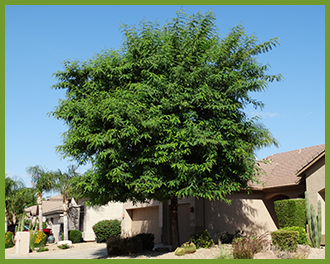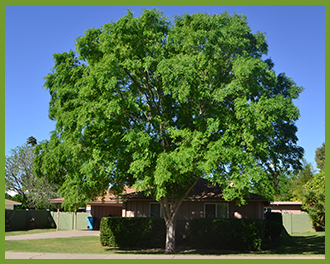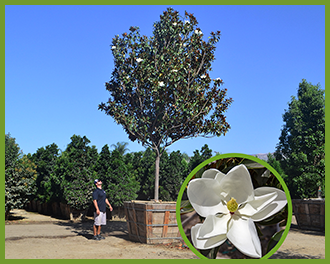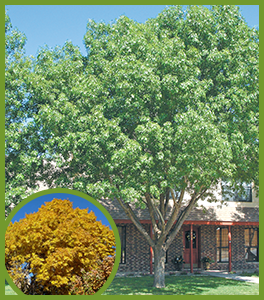
Let’s face it, energy is a resource that is bound to be more expensive in the future. Living comfortably shouldn’t have to cost a fortune. The good news is that you can do something to lower your utility bills that will not only save you money, it will also add value to your property. Homeowners can cool off their house with shade trees. Houses shaded by trees stay cooler, naturally, than homes lacking shaded trees. And cooling off your house naturally is far less expensive than turning on your A/C and forking over tons of money each month to pay your utility bills. Of course, it needs to be the right trees planted in the right place to cool your house and save energy.
How Much Can You Save on Utility Costs with Shade Trees
Homeowners can save quite a bit of energy and money by planting trees around the house. For instance, using a model of a 2,500-square foot unshaded house in Sacramento, a computer program at the University of California, Davis, predicted that shading the house’s east and west side (including windows) could reduce energy use for air conditioning by as much as 40 percent annually.
Follow the Sun’s Path
Location, location, location…Yep, location is key when planting shade trees to cool the house. Basically, follow the sun’s path. The path along which the sun travels from morning to afternoon, and from winter to summer, helps to determine the best locations to plant trees that are going to have a substantial effect on lowering utility bills.
Of course, it’s not always about cooling your house, sometimes you want your house to stay warm, especially during those colder months. A deciduous tree or semi-evergreen is ideal for both summer and winter times. With a deciduous or semi-evergreen tree, the sun can shine through its leafless canopy in the winter to let in some sunlight and heat into your house. During the summer heat, a larger sized deciduous or semi-evergreen tree with a sprawling canopy is an ideal choice for use as a shade tree around your house. Buy as big as you can because bigger is better for the greatest effect on utility costs.
Where to Plant Trees for Best Effects
In order for trees to have the biggest effect on utility costs, you’ re going to have to think about the right location on your property to plant them. For best results, shade windows first as sun shining directly through a window can heat up a home quickly. Plant trees on the east, south, and west sides near windows, and if possible, position the tree just to the side so they can provide shade without completely blocking the view. As tempting as it might be, don’t plant too close to the house. Yes, the closer you plant, the more shade you’ll get. However, planting trees too close can cause roots to damage the foundations, so plant trees 5 to 10 feet away from the foundation. Another good place to plant shade trees is over a paved area. Shade trees can reduce heat stored or reflected in paved surfaces. Plus, shading a paved area such as a paved patio can create a nice garden retreat. It’s also a good idea to plant shade trees near air conditioners. Keeping your air conditioner cool can reduce its workload and cut down energy consumption.
Smart Trees for Shade
At Moon Valley Nurseries, we have bigger trees for sale, ready to provide the shade you need to cool or warm your house, naturally. Here are a few of our favorite trees, in stock and ready to be delivered and planted by our professional landscape crew.

Tipu Tree
Homeowners looking for an attractive shade tree with striking features will love the Tipuana tipu tree. This fast growing medium to large sized tree can provide a great amount of shade to cool your house, while beautifying any location on your property. It’s a showy, semi-evergreen that puts on a unique show of golden blooms from late spring into early summer that contrasts beautifully with its feathery, bright bluish-green foliage.

Chinese Elm
Chinese Elm tree, ‘True Green’, is an excellent choice for sun drenched Southwestern properties because it can bring a massive amount of shade to any property. Native to China, this large, semi-evergreen tree has been widely used in parks thanks to its wide, natural umbrella-shaped shade capabilities, making it an ideal shade tree to naturally cool down your house. Moon Valley Nurseries carries the ‘True Green’ strain, which does not weep. The ‘True Green’ strain features small, deep green leaves and is prized for its upright, rounded growth habit favored by many homeowners.

Magnolia
Looking to add classic beauty with tons of variety to your landscape this spring? Look no further than the always popular Magnolia. A symbol of the South, the Magnolia is an eye-catching tree with its striking foliage, spreading and large canopy, creamy white fragrant blooms, and elegant evergreen appearance. The Magnolia is mostly known for its showy white blossoms and beautiful fragrant smell that comes with them. Magnolias are easy to grow and they thrive in our long summers.

Arizona Ash
The Arizona Ash is well suited to handle all extreme temperature changes. In the fall, this deciduous tree’s foliage turns into a vibrant golden color. The Arizona Ash is seedless and only requires one clean up once the leaves drop. The tree grows its leaves back quickly in the spring, which provides maximum shade in the summer months. Its canopy of shade covers a large amount of territory and its flowers form in small clusters in the spring.
Moon Valley Nurseries is your one stop shop for all your landscape needs. Our experts have decades worth of experience and they will be able to assist you with any projects or questions you may have. Remember to change your watering schedule as we enter the winter and be sure to map a Moon Valley Nurseries locations right here.
Submit a Comment